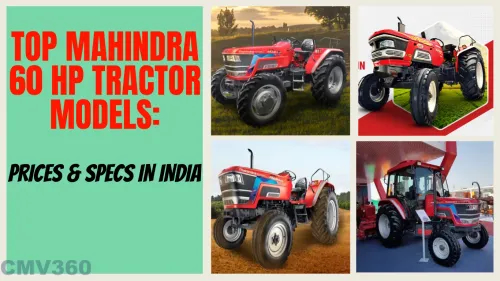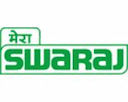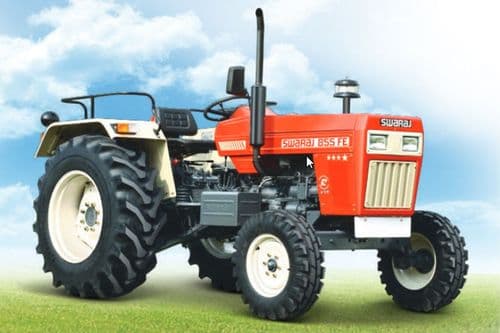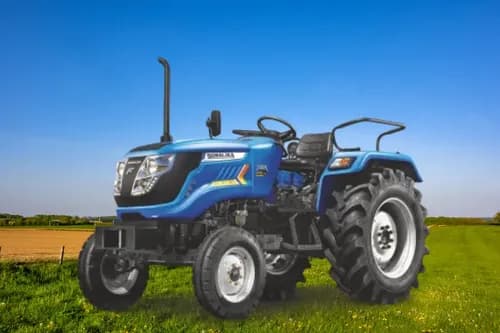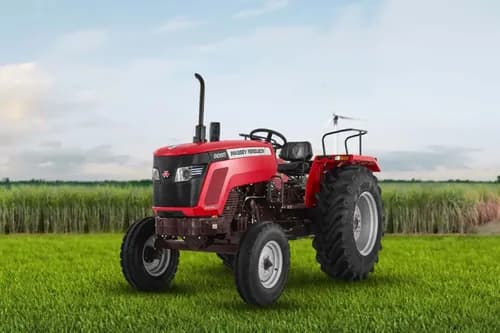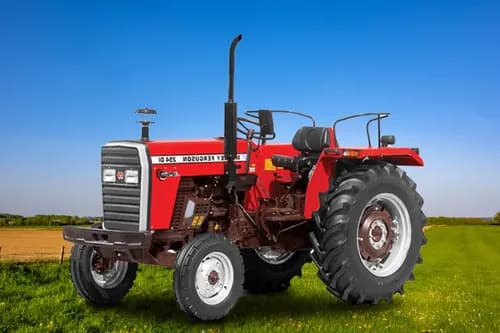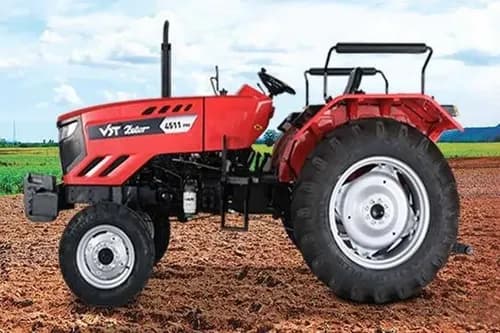Ad
Ad
Ad
An overview of Sub-Mission on Agroforestry (SMAF): Key Benefits, Eligibility, and Guidelines
The National Agroforestry Policy was created by the Indian government in 2014 to harness the potential of agroforestry in mitigating the effects of climate change. This technique offers benefits such as microclimate moderation, conservation of natural resources, and income generation. To promote agroforestry in an organized manner, the policy recommends the establishment of a Mission or Board. As a result, the Sub-Mission on Agroforestry (SMAF) was launched under NMSA, with the goal of expanding tree coverage on farmland in conjunction with agricultural crops, making agriculture less susceptible to erratic weather patterns.

Objectives of Sub-Mission on Agroforestry (SMAF)
The objectives of this initiative are as follows:
-
Encouraging and expanding tree plantation: The main aim is to encourage and expand tree plantation in a complementary and integrated manner with crops and livestock. This will not only improve productivity but also employment opportunities, income generation, and livelihoods of rural households, especially small farmers.
-
Ensuring availability of quality planting material: To promote agroforestry, the availability of quality planting material such as seeds, seedlings, clones, hybrids, and improved varieties is necessary. Therefore, this initiative aims to ensure the availability of quality planting material.
-
Popularizing various agroforestry practices: Agroforestry practices/models suitable to different agro-ecological regions and land use conditions will be popularized through this initiative. This will help farmers to select the best practices/models for their specific region and land use conditions.
-
Creating a database: A database will be created to store and manage information related to agroforestry. This will help in knowledge sharing and better decision making.
-
Providing extension and capacity building support: To support the agroforestry sector, extension and capacity building support will be provided to farmers. This will help them to adopt new technologies and practices and to enhance their skills and knowledge.

Sub-Mission on Agroforestry (SMAF) Mission Strategy
To achieve the objectives of the Sub-Mission on Agroforestry (SMAF), the following multi-pronged strategy will be adopted:
-
Expanding tree plantation coverage: This will involve encouraging farmers to grow trees in their farmland along with crops/cropping systems and/or livestock as an integral component of the farming system. The aim is to provide livelihood, environmental and bio diversity protection.
-
Promoting nurseries: SMAF will promote the setting up of new small nurseries and hi-tech big nurseries to produce quality planting materials like seeds, seedlings, clones, improved varieties, etc. These nurseries will meet the requirement of quality planting material/seeds for the farmers.
-
Promoting various Agroforestry practices/models: SMAF will promote various Agroforestry practices/models suitable to different agro-ecological regions and land use conditions. This will support adaptation and mitigation efforts in climate change. Some of the practices/models that will be promoted include sustainable Agrisilvicultural systems, Silvipastoral systems, Agrisilvopastoral system, other systems of agroforestry viz. Apiculture with Trees, Aqua forestry, etc.
-
Promoting Peripheral and Boundary Plantation: SMAF will promote peripheral and boundary plantation on farms. This will serve as fencing of the farm, demarcation of the farm boundary, stabilizing farm bonds, protecting from soil erosion, improving soil moisture, enrichment of soil organic matter without affecting coverage under crops.
-
Low Density Plantation on Farm Lands: SMAF will support low density plantation on farm lands including intermediate/strip plantation, High Density Block Plantation. This will be done in complementarily with crops/cropping system as an agroforestry system.
-
Creating a database: SMAF will create a database on area under agroforestry, status of soil organic carbon, information and knowledge support, etc. This will be done with the use of ICT.
-
Capacity building/training: SMAF will provide capacity building/training for development officials/workers, scientists, and farmers under national & international exchange programmes. Extension activities including demonstration of suitable Agrisilvicultural, Silvipastoral, agrisilvopastoral systems, seminars/workshops/conferences/fairs & exhibitions, and exposure visits at national and international levels will also be conducted.
-
Implementation of the scheme: The scheme will only be implemented in the states having liberalized transit regulations for transport of timber and will be extended to other states as and when such relaxations are notified by them. Liberal transit rules will be a precondition for availing the benefit of the programme.
-
Promotion of endemic and medicinal trees: SMAF will promote endemic and other species including trees of medicinal value suitable to the agro-climatic conditions under the programme. Any species which are exotic, not suitable to the agro-ecology and not part of approved afforestation programme will not be supported.
-
Soil Health Cards: Soil Health Cards will be made a pre-requisite for farmers getting the benefit under the programme to indicate the soil carbon status and facilitating assessment of Soil Carbon improvement from time to time.
-
Quality of stock type: The choice of stock type (bare-root or container or poly bags) used may depend on species, local availability, planting method preferred or cost. It is important that the seedlings for plantation should be of the highest quality possible. The shoot and root systems of the stock must be large enough and in balance so that the seedlings have a good probability of establishing and competing successfully in the field. A good fibrous/tape root system is desirable for most species. Seedlings should be free from diseases, and appear healthy.
Sub-Mission on Agroforestry (SMAF) interventions
The Sub-Mission has several interventions aimed at promoting the sustainable use of land and creating income opportunities for farmers. These interventions include:
-
Nursery Development for quality planting material (NDQPM) - Assistance will be provided for the establishment of nurseries, including small, big, and hi-tech nurseries, to produce quality planting material for farmers.
-
Peripheral and Boundary Plantation (PBP) - The bunds around the periphery of farmers' fields will be utilized by growing tree species as peripheral/boundary plantations. This will not only make effective use of the precious land for livelihood support but also for generating additional income opportunities for the farmers. It will also help in stabilising the bunds and reducing soil erosion.
-
Low Density Plantation on Farm Lands(LDPFL) - Low density block plantation ranging from more than 100 plants/ha to more than 500 plants/ha without sacrificing the yield of the existing crops/cropping systems, shall be incentivized at the proportionate rates as applicable to per plant expenditure.
-
High Density Block Plantation (HDBP) - High-density block plantations on farm lands will be supported as a complementary source of income to the farmers. Differential planting densities ranging from more than 500 plants/ha to 1500 plants/ha as intermediate blocks/strip plantations/wind breaks would be supported. Farmers can take up block plantation in waste and degraded land not suitable for growing crops to make productive use of these land in creating livelihood and income opportunities for them. In addition, the trees will help in enriching the soil and making it fertile & more productive thereby bringing land under crops in times to come.
-
Capacity Building & Trainings - Capacity building and training activities will be supported under this intervention, which will include training of farmers/field workers with a view to ensure growing quality planting material, skill development, awareness campaign, publications, information sharing, exposure visits at national and international levels, seminars/workshops at national/international levels, etc. States can utilize up to 5% of the allocated funds for capacity building and training activities.
-
Demonstration of Agroforestry Models - Specific projects for demonstration to bridge the yield gap and for extension purposes on area specific innovative agroforestry models by SAUs / ICAR Institutes/ CAUs/CSIR/ICFRE institutes / State Government/ other National & International level agencies/ organizations will be supported particularly in the field of climate resilient agroforestry system & studies on carbon foot print, carbon sequestration, nitrogen fixation etc., with the approval of Project Sanctioning Committee on a case-to-case basis.
Funding pattern and pattern of assistance for the Sub-Mission on Agroforestry
The following are some points about the funding pattern and pattern of assistance for the Sub-Mission on Agroforestry:
- The Sub-Mission on Agroforestry will be operational under the National Mission for Sustainable Agriculture (NMSA).
- The funding pattern for the program will be 60:40, with 60% of the funds provided by the Government of India (GoI) and 40% by state governments. However, for the eight states of the Northeast Region, as well as the hilly states of Himachal Pradesh, Uttarakhand, and Jammu & Kashmir, the funding pattern will be 90:10, with 90% of the funds provided by GoI and 10% by state governments. For Union Territories (UTs), the assistance will be 100% provided by GoI.
- The financial assistance provided to farmers will be to the extent of 50% of the actual cost of the interventions, but it will be limited to 50% of the estimated cost as indicated in the cost norms for the respective interventions.
- Farmers groups, cooperatives, and Farmer Producers Organizations (FPOs) can also avail of the benefits of the program, but the assistance can be accessed as per the norms and provisions applicable to individual farmers.
- At least 50% of the allocation will be utilized for small and marginal farmers, of which at least 30% will be women beneficiaries/farmers.
- Additionally, 16% and 8% of the total allocation or in proportion to the Scheduled Caste (SC) and Scheduled Tribe (ST) population in the district, respectively, will be utilized for the Special Component Plan (SCP) and Tribal Sub Plan (TSP).
What are the key benefits of Sub-Mission on Agroforestry (SMAF)?
The Sub-Mission on Agroforestry (SMAF) has several key benefits, including:
-
Increased income for farmers: SMAF supports the establishment of agroforestry systems on farmlands, which can provide farmers with additional sources of income. These systems can produce a variety of products such as fruits, nuts, timber, and fodder for livestock.
-
Soil conservation and fertility: Agroforestry systems can help in soil conservation by reducing soil erosion and increasing soil fertility. Trees and other perennial vegetation help to improve soil quality by increasing organic matter content, reducing soil temperature, and promoting nutrient cycling.
-
Climate change adaptation and mitigation: SMAF promotes the establishment of climate-resilient agroforestry systems, which can help in adapting to the effects of climate change. Additionally, agroforestry systems have the potential to sequester carbon, which can contribute to mitigating climate change.
-
Biodiversity conservation: Agroforestry systems promote the conservation of biodiversity by providing habitat for a variety of plant and animal species.
-
Capacity building and training: SMAF supports capacity building and training activities for farmers, field workers, and other stakeholders. This helps to enhance knowledge and skills in agroforestry, leading to better adoption and management of these systems.
Overall, SMAF has the potential to provide multiple benefits for farmers, the environment, and society as a whole.

Who is eligible for Sub-Mission on Agroforestry (SMAF)?
The Sub-Mission on Agroforestry (SMAF) is open to all farmers, farmer groups, cooperatives, and Farmer Producer Organizations (FPOs) across the country. However, the specific eligibility criteria for availing the benefits of the program may vary depending on the type of intervention and the location of the project. It is recommended to refer to the program guidelines and consult with the relevant authorities for detailed information on eligibility.
How can a farmer apply for Sub-Mission on Agroforestry (SMAF)?
- The application process for the Sub-Mission on Agroforestry (SMAF) varies by state, as the program is implemented at the state level.
- Farmers interested in applying for SMAF can reach out to their respective State Agriculture/Horticulture Departments or the designated nodal agency for SMAF in their state to obtain information on the application process and required documents.
- Generally, the state government will issue a notification or advertisement to inform farmers about the program and the application process.
- The notification will include details on the documents required, eligibility criteria, and other relevant information. The farmer will need to submit their application along with the necessary documents to the designated authority, as specified in the notification.
- Once the application is submitted, it will be reviewed by the relevant authorities, and if approved, the farmer will be eligible for the financial assistance and other benefits under the program.
What are some general guidelines for Sub-Mission on Agroforestry (SMAF)?
Here are some general guidelines for the Sub-Mission on Agroforestry (SMAF):
-
The SMAF scheme is implemented on a demand-driven approach, meaning that farmers need to approach the concerned authorities with their proposals for agroforestry interventions.
-
Farmers must apply to the designated implementing agency in their respective states, and the agency will assess the proposal for its feasibility, technical soundness, and economic viability.
-
Farmers must provide necessary documents and information for availing the benefits of SMAF, such as identity proof, land ownership documents, bank account details, and project proposal.
-
SMAF provides financial assistance to farmers for various agroforestry interventions, including nursery development, boundary plantation, low-density plantation, and high-density plantation.
-
The scheme also provides support for capacity building and training activities, including awareness campaigns, skill development, and exposure visits.
-
SMAF provides financial assistance to farmers and farmer groups/cooperatives/FPOs in the ratio of 60:40 (central:state) except for certain states, where the ratio is 90:10.
-
The scheme mandates that at least 50% of the allocation must be utilized for small and marginal farmers, of which at least 30% must be women beneficiaries/farmers.
-
SMAF also reserves 16% and 8% of the total allocation for the special component plan (SCP) and tribal sub-plan (TSP), respectively, to benefit the scheduled caste and scheduled tribe populations in the district.
-
SMAF encourages farmers to undertake agroforestry interventions in wastelands, degraded lands, and bunds to ensure efficient utilization of land resources and improve soil fertility.
-
SMAF emphasizes the need for adopting climate-resilient agroforestry systems and promotes innovative agroforestry models that can bridge the yield gap and reduce carbon footprints.
FAQs on Sub-Mission on Agroforestry (SMAF)
Here are some frequently asked questions (FAQs) about Sub-Mission on Agroforestry (SMAF):
Q1: What is Sub-Mission on Agroforestry (SMAF)?
Ans: Sub-Mission on Agroforestry (SMAF) is a government scheme aimed at increasing the income of farmers by promoting agroforestry practices in India.
Q2: Who is eligible to apply for SMAF?
Ans: All farmers, including small and marginal farmers, farmer groups, cooperatives, and farmer producer organizations (FPOs), are eligible to apply for SMAF.
Q3: What kind of financial assistance is provided under SMAF?
Ans: Farmers can receive financial assistance of up to 50% of the actual cost of the interventions, limited to 50% of the estimated cost as per the cost norms. The funding pattern is 60:40 between the Government of India and state governments, except for eight states in the Northeast region, Himachal Pradesh, Uttarakhand, and Jammu & Kashmir, where it is 90:10.
Q4: What interventions are covered under SMAF?
Ans: SMAF covers several interventions, including nursery development for quality planting material (NDQPM), peripheral and boundary plantation (PBP), low-density plantation on farm lands (LDPFL), high-density block plantation (HDBP), capacity building and trainings, and demonstration of agroforestry models.
Q5: How can a farmer apply for SMAF?
Ans: Farmers can apply for SMAF through their respective state departments or agencies. They can also seek help from the nearest agriculture extension office or horticulture department for more information.
Q6: What is the deadline for applying to SMAF?
Ans: The deadline for applying to SMAF may vary depending on the state or district. Farmers are advised to check with their respective state departments or agencies for more information.
Q7: Can a farmer apply for multiple interventions under SMAF?
Ans: Yes, a farmer can apply for multiple interventions under SMAF, subject to the eligibility criteria and cost norms for each intervention.
Q8: Is there any provision for capacity building and training under SMAF?
Ans: Yes, capacity building and training is an important intervention under SMAF. Activities like training of farmers/field workers with a view to ensure growing quality planting material, skill development, awareness campaign, publications, information sharing, exposure visits at national and international levels, seminars/workshops at national/international levels, etc., are supported under this intervention.
Q9: What is the focus of SMAF in terms of beneficiaries?
Ans: At least 50% of the allocation is to be utilized for small and marginal farmers, of which at least 30% are women beneficiaries/farmers. Further, 16% and 8% of the total allocation or in proportion to SC/ST population in the district will be utilized for Special Component Plan (SCP) and Tribal Sub Plan (TSP), respectively.
Q10: What are some of the benefits of SMAF?
Ans: SMAF promotes sustainable agricultural practices, improves soil health and fertility, enhances water retention capacity, helps in mitigating climate change, and provides additional income opportunities to farmers. It also contributes to biodiversity conservation and provides a range of ecological services.
Features & Articles
Tips for Selling Your Commercial Vehicles
In this article, we will share ideas for selling an old commercial vehicle so that you get a good price for your vehicle....
25-Apr-24 11:56 AM
Read Full NewsSolis 4215 E: Redefining Farming for Indian Farmers with Innovation & Affordability
Solis 4215 E: A 43 HP tractor revolutionizing Indian farming with powerful performance, comfort, and affordability, enhancing productivity and farmer prosperity....
25-Apr-24 06:50 AM
Read Full NewsGovernment Initiates Early Implementation Plans for BS-VII and CAFE-III Emission Norms
The government will impose stringent BS-VII and Corporate Average Fuel Efficiency-III (CAFE-III) criteria to update emission standards....
22-Apr-24 02:17 PM
Read Full NewsTips To Improve Mileage Of Tata Intra V30 Pickup Truck
In this article, we have listed some practical tips and driving techniques for drivers to enhance the fuel efficiency of the Tata Intra V30....
20-Apr-24 11:49 AM
Read Full NewsTop 5 Reasons to Buy a Tata Ace HT Plus in India
This article lists the top 5 reasons to buy a Tata Ace HT Plus in India for your business....
17-Apr-24 09:44 AM
Read Full NewsTop Mahindra 60 HP Tractor Models: Prices & Specs in India
Mahindra's 60 HP tractors: versatile, robust, with advanced features, balancing affordability and performance for Indian farmer's needs....
17-Apr-24 08:56 AM
Read Full NewsAd
Ad
Registered Office Address
Delente Technologies Pvt. Ltd.
M3M Cosmopolitan, 12th Cosmopolitan,
Golf Course Ext Rd, Sector 66, Gurugram, Haryana
pincode - 122002
Join CMV360
Receive pricing updates, buying tips & more!
Follow Us
COMMERCIAL VEHICLE BUYING BECOMES EASY AT CMV360
CMV360 - is a leading commercial vehicle marketplace. We helps consumers to Buy, Finance, Insure and Service their commercial vehicles.
We bring great transparency on pricing, information and comparison of tractors, trucks, buses and three wheelers.





